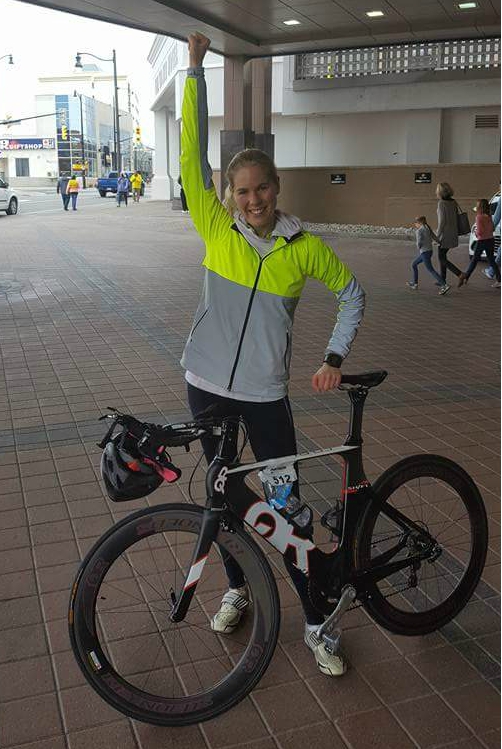Cycle Your Way to Improved Health

Hopefully the nice weather has inspired you — as it has inspired me — to dust off your bike and get moving. Cycling is an excellent non-impact and often convenient way to improve cardiovascular health, leg strength, and balance.
You can bike outdoors or get an indoor stationary bike. Plus, nothing improves my mood like a bike ride in beautiful weather. I particularly love cycling in the country — I always make a point of bringing my bike whenever I travel outside the city.
That said — and I say this next part with reservations (and sadness) — cycling can wreak havoc on your posture and mobility. So, if the nice weather has inspired you to dust off your bike, first take a moment to pat yourself on the back for being active. Then, make SURE you are also following the tips below. These apply to stationary exercise bikes as well!
Why? Cycling involves sitting, and usually a fair amount of bending forward, which can create stiffness in the hips and back and promote bad posture. To counteract the strain of sitting on the bike (since sitting is something most of us do way too much of already), prioritize flexibility exercises that mobilize the hips and chest, and strength exercises that strengthen the upper back and core.
On Your Bike
- Make sure your bike is properly set up; make sure your seat and handlebars are at the appropriate height. If you spin inside, make sure that you always have resistance on your fly wheel, especially when spinning quickly. Stay in control and prioritize proper form — quality over quantity!
- Check your form. Make sure your knees aren’t caving in or splaying out, and that you’re using your core to keep your pelvis stable as you ride. Don’t just push the pedals down, as that overworks the front of your legs. Instead, work through the entire pedal stroke by using the back of your legs to pull your heels up toward your bum.
After You Cycle
1. Stretch out your legs — particularly your hip flexors — after every ride and throughout the day.
Hip-flexor stretch: Step your right leg forward into a lunge; reach your left arm diagonally over your body so you lean gently to the right. Bend your left knee slightly and squeeze your left bum muscle — feel a stretch in the front of the left hip. Hold for 30 seconds. Repeat with the left leg forward.
During the Rest of Your Workout
1. Aim for a 2-to-1 ratio of posture exercises to chest-strengthening exercises. I count any exercise that strengthens the upper back or rotator cuff muscles, or that stretches the chest, as a “posture” exercise. Examples of chest-strengthening exercises include bench presses, push-ups, or chest flys.
This is a personal favourite posture stretch: Lie on a foam roller with the roller running lengthwise along your spine, arms by your side. Alternate bringing one arm up behind your head toward the floor behind you. Keep the arm straight. As your right arm goes back, turn your head to the left. Then switch sides.
2. Incorporate exercises that involve rotation, extension, and side bending the spine to counteract the hours of relative stillness on your bike or at your desk.
- Strength train to increase bone density (cycling is not weight bearing, which is great if you have osteoarthritis, but it means cycling doesn’t help to strengthen your bones and prevent osteoporosis) and to strengthen your legs. Training your legs can lead to greater power, strength, and endurance on the bike, and can also help counteract cycling-related overuse injuries — such as patellofemoral syndrome, iliotibial band syndrome, and patellar tendinitis — and muscle imbalances. Prioritize multi-joint exercises such as squats, deadlifts, and bent-over rows and core exercises such as planks, bird dogs, and wood chops.
- Make sure you are not only cycling. Don’t over-train. Cross-train. Complement your cycling with activities that require multi-directional movements — think tennis, yoga, or dance. Multi-directional dynamic activities are weight bearing, which will help build bone density, and adding variety to your routine will help ward off boredom and the dreaded “fitness plateau.”
During Daily Life
- Weave motion into your day so you are not simply sitting while cycling, sitting at work, and then sitting in front of the TV at night. Set an alarm to get up regularly; pace on conference calls; walk to your colleague’s desk rather than calling; go for a walk at lunch.
- Be mindful of your posture throughout your day. Pick a “mindfulness” colour; when you see that colour stand or sit tall and suction your head back in space.
Originally published at FLAMANFITNESS












